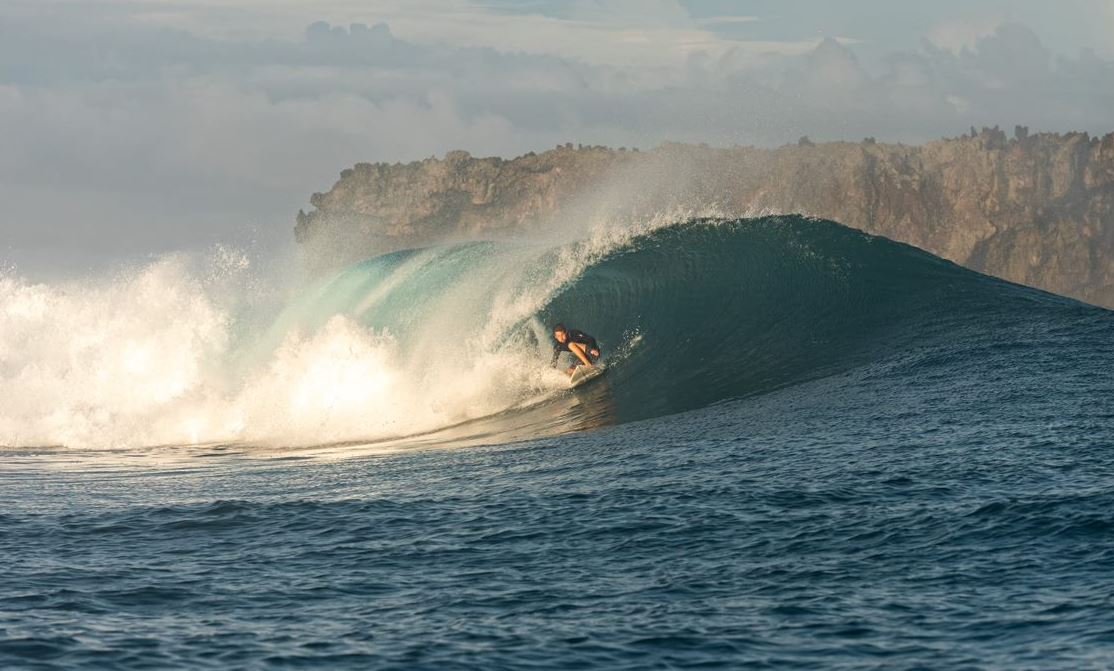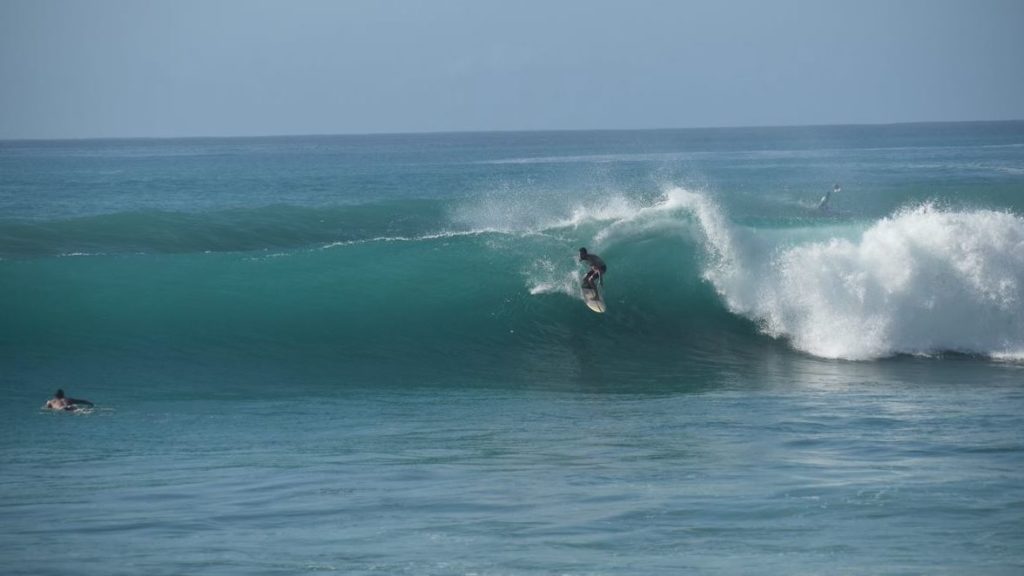Surfing is a widely known sport famous for beach and ocean lovers. Amid the global pandemic, people are now still enjoying the experience of surfing in general, with the global market proposed to exceed about 3.1 billion USD by the year 2026. And with the rising interest in surfing among the younger generations all over the world, this would come as no surprise for a lot of people.
If you’re one of the people who are considering taking up surfing, you’re in luck since we’ve compiled some of the best tips, recommendations, and a guide to the common mistakes that beginner surfers often commit (and possibly even some experienced surfers as well).
10 Most Common Beginner Surfing Mistakes That You Might be Making
1. Not Practicing on Shore
Practicing on the beach is a crucial part of learning how to surf since that’s when you learn the basic moves and maneuvers to properly navigate the waves out at sea. A common surfing beginner mistake, however, that beginners typically do is that they go straight to practicing on the water, which not only makes it harder for their body to figure out the movements, but it also makes learning much more grueling and longer.
By practicing with your surfboard onshore and on stable ground, you can promote muscle memory and make your body understand how you should move when you do transition on water. From paddling to popping up, practicing onshore will make the learning process easier and a bit faster.
2. Not Knowing the Proper Center of Gravity
Your center of gravity on solid ground and on the water is different – And keeping your balance on the water is absolutely crucial with surfing. Unfortunately, surfing beginners mistakenly hold their center of gravity too high, increasing their risk of wiping out or losing their balance on the water. To be an effective surfer, you need to know how to hold your balance lower by correcting your stance on your surfboard.
3. No Warm-Ups
As with other physical activities, warm-ups are important to make your blood flow, properly lubricate your joints, and lower your risk of pulling or tearing your muscles during surfing. If you’re a surfing beginner, one mistake you can commit is being too confident that you skip warm-ups altogether. Not only does this make your movements a bit more sluggish, but it may also put you at risk of cramps or other situations that may make it hard for you to go back to shore. It’s important to familiarize yourself with the correct warmup steps or routines so that each part that may be strained is properly warmed up.
4. Incorrect Surf Boards
Surfboards come in different shapes, sizes, and materials, depending on your skillset, their longevity, and your overall goal in surfing – whether you want to cut through larger waves or you want to perform more acrobatic stunts. For surfing beginners, one common mistake is using a surfboard that’s not quite fit with their skill set, which does not only make learning harder but may also prove to be perilous. For starters, go for longboards first since these are the easiest to paddle and are the most stable of all surfboard types.
5. Not Being Alert Out at Sea
The open sea is highly unpredictable, so alertness is of utmost importance any time you’re surfing or just swimming. You need to be alert of changes in weather, wind strength, and rip currents, which may indicate perilous conditions for you, and anyone untethered to the shore. Unfortunately, this surfing beginner mistake may cause dangerous situations that may be harmful to any surfer. Before going on your very first surfing trip or surfing lesson, make sure that you’re familiar with the beach signals and flags, emergency signals, and that you have a fair knowledge about rip currents, waves, and winds.
6. Wrong Timing and Speed
Being a successful surfer largely depends on your timing and speed. You need to be able to paddle at the same speed as the wave you’re planning to ride and to pop up smoothly from your prone position. For surfing beginners, this mistake is often observed when they either pop out too early or too late when a wave approaches. Learn how to weigh the wave’s momentum so that you’ll know when to pop up. Popping up too early or too late increases your risk of wiping out or getting a shaky stance as you ride down the face of the wave.
7. Incorrect Stance
Balance can be dictated by two things when it comes to surfing: your stance and your center of gravity. For beginners, you need to first understand what the correct stance is so that you get maximum stability when you’re standing on your surfboard. While your first instinct might be positioning your feet on either side of the surfboard to keep from falling over, this beginner surfing mistake might actually make it harder for you to balance yourself since you’ll be shifting your weight between your two feet. Keep your feet in the middle of the surfboard with your left foot forward and your right foot at shoulder length distance (or more) at the back. In some instances, you may also favor your right foot, which gives you the category of being a “goofy” surfer.
8. Awkward Upper Body Movement
When riding a wave, your upper body movement may dictate how you prevent yourself from falling over or wiping out. Coordinating your upper body movement helps you maneuver yourself and your surfboard gracefully without slowing down movements. As you’re starting out, this step may be a bit challenging since you’re still figuring out the proper balance and movements that will help you navigate through a wave, but it’s a good start to be aware of this beginner surfing mistake so you can correct it along the way.
9. Wrong Board Position
Aside from your stance and foot position on your surfboard, you should also know where exactly to stand so that you’re not standing too far back or too forward on your surfboard. A beginner mistake often committed by surfers is improperly positioning themselves on the surfboard, causing them to wipe out just as the wave approaches. Make sure that when you pop out, you position your feet in the middle.
10. Keeping Your Eyes on Your Board
Lastly, one mistake that most beginner surfers commit is looking at their surfboard instead of looking where they’re going. If you want to properly position yourself on your board or you want to be as meticulous with your movements, you might be tempted to keep your eyes trained on your surfboard. Unfortunately, this may stop you from observing or keeping yourself aware of your surroundings. Make sure that you strike a balance between wanting to perfect your stance and position and still being alert of what’s happening around you as you surf.
5 Useful Tips for Surfing Beginners
Aside from the most common surfing beginner mistakes that you might be committing, there are also a few useful surfing tips that you should heed to make your learning process a bit easier and safer for you and the people around you.

1. Start With Beginner Soft Waves
When you’re starting out with surfing, it’s best that you stick to the more beginner-friendly waves so that you can get the hang of maneuvering and balancing easily. Don’t worry you can start increasing the level of difficulty depending on your surfing skill set. Just avoid jumping difficulties since not only can this make learning much more of a hassle, but it may also pose some risks for you as a beginner.
2. Don’t Learn Surfing by Yourself
While there are people who boast of learning surfing on their own, it’s best that you seek training or lessons from a professional surfing instructor. This will help you get the basics of surfing better and lower the risk of putting yourself in dangerous situations. In some cases, good surfing teachers will also help you foster a better relationship with surfing as a sport and motivate you better to learn.
3. Avoid Following Expert Surfers When You’re Still Learning
As with other kinds of sports, experts often surf in much more difficult settings and ride much more challenging waves. If you’re only starting out, try to steer clear from expert surfers since this usually means that you’ll be facing much more unpredictable waters.
4. Find a Beginner Surfing Spot
As experienced surfers would tell you, there are specific locations that are much more beginner-friendly than others, giving you softer and easier waves to ride through. Try to map out beaches that are categorized as beginner-friendly and plan out your surfing trips to these beaches first.
5. Never Go Without a Surfing Leash
A leg rope or a surfboard leash is a cord that attaches you to your surfboard while you’re surfing. With 99% of surfers using a surfing leash, there’s virtually no reason for you to skip this important surfing tip. Surfboard leashes help you avoid runaway surfboards whenever you wipe out, as well as keep you afloat when the waves pull you under. In a way, surfboard leashes can keep you afloat and save you from dangerous situations that may lead to unfortunate tragedies.
Make Sure You’re Safe When You’re Out in the Open Seas
As a surfing beginner, learning how to keep yourself safe first is of utmost importance. You need to learn the basics of ocean safety so that you’ll have a better grasp of what to do when you’re still starting out with surfing. Follow these tips and try to correct as many of the most common beginner mistakes in surfing and you’ll make learning a breeze.



